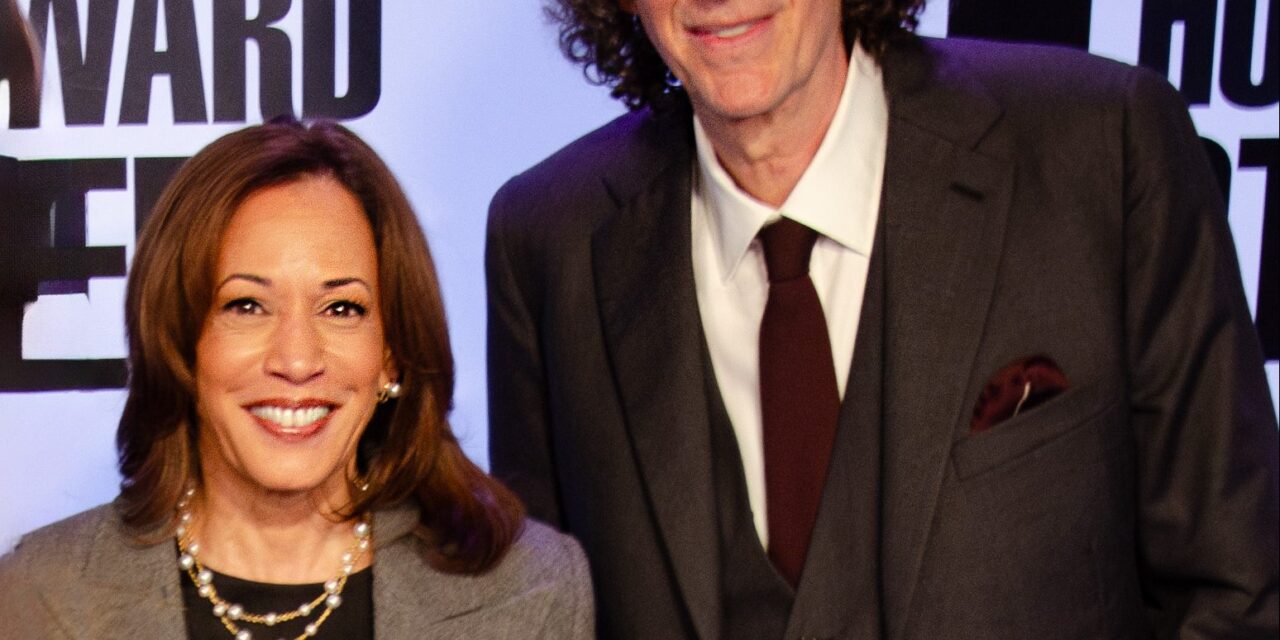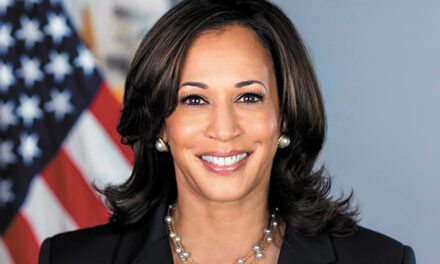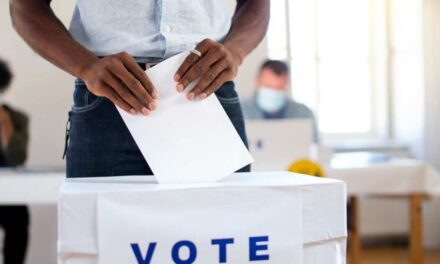
Kamala Harris is on a media blitz this week, sitting for interviews with CBS’s 60 Minutes and The Late Show with Stephen Colbert, ABC’s The View, SiriusXM Radio’s The Howard Stern Show, and Spotify’s Call Her Daddy podcast. Her running mate Tim Walz had splashy sit-downs with Fox News Sunday and ABC’s Jimmy Kimmel Live!
During this same period, Donald Trump appeared on Fox News’s The Ingraham Angle, Hugh Hewitt’s radio show, The Ben Shapiro Show podcast, and the right-leaning Flagrant comedy podcast. He refused an invitation to appear on 60 Minutes.
These choices not only distill the divergent electoral strategies of the two campaigns but also reveal how the two candidates view the country they seek to lead. Harris is trying to reach broad audiences across demographic spectrums, hunting for undecided voters and preaching national unity. Trump is strictly focused on animating conservatives—with an emphasis on young male podcast listeners—and spreading misinformation, preferring interviewers who let him lie with impunity.
Not too long ago, Trump campaign officials boasted about how their candidate often talked with reporters and accused Harris of ducking such unscripted encounters. Trump has indeed held six press conferences since August, while Harris has held zero. Moreover, Trump’s running mate J.D. Vance has been a particularly eager interviewee for much of the campaign; an Axios tally found Vance had done 24 national TV interviews between mid-July and mid-September, compared to two by Trump, and one each by Harris and Walz. (Vance has been less visible since the October 1 debate, though in recent days, he has done the conservative Ruthless podcast, a local TV interview in western Virginia while viewing hurricane damage, and a Detroit TV news interview after a Michigan rally.)
However, when Trump or Vance emerges from their ideological cocoon and meets national journalists, the exchanges are almost always combative. Reporters who ask questions with facts that don’t comport with the Republican narrative are pilloried as “fake news” (or, as Trump said to Shapiro, “worse than fake … corrupt”) and in league with the Democrats. They are not really trying to reach a broader audience outside of the conservative echo chamber but create fodder that fills the chamber.
The willingness of Trump and Vance to do that much has diminished recently, as they have increasingly complained about what real journalists tend to do: “fact-checking.” During the vice-presidential debate hosted by CBS, when a moderator corrected a point Vance made about the legal status of Haitian migrants in Springfield, Ohio, Vance whined, “The rules were that you guys weren’t going to fact-check.” (Fact-check: the rules did not say that.) Trump skipped 60 Minutes, according to CBS’s Scott Pelley, after he “complained that we would fact-check the interview. We fact-check every story.”
Instead of suffering more fact-checking from neutral journalists, Trump is on a streak of 24 consecutive interviews with conservative media outlets, per a count shared by a Harris campaign official on X. During this time, Trump has gone on a lying rampage, recklessly trashing the federal government response to Hurricane Helene.
Sticking to conservative media did not completely immunize Trump from fact-checking. Fox News’s Laura Ingraham felt compelled to gently correct him twice over misstatements regarding how President Joe Biden and Harris have handled the hurricane. Nor did it prevent offensive comments from circulating beyond Trump’s target audience. On Hugh Hewitt’s show, he waded into eugenics when discussing immigration—“a murderer, I believe this, it’s in their genes. And we’ve got a lot of bad genes in our country right now”—generating headlines in mainstream news outlets and sparking heated cable TV news discussion.
But much of Trump’s prattle on conservative shows stays siloed. Not much attention was paid to Trump’s visit to Ben Shapiro’s show, where he floated removing both Biden and Harris from office with the 25th Amendment and then oddly wondered aloud who would be following in the line of succession, not knowing it would be Speaker of the House, Mike Johnson. Shapiro did no fact-checking of Trump’s lies about hurricane response or baseless claims of Democratic electoral “cheating.”
In one particularly weird rambling answer, Trump claimed he won Wisconsin after an ABC/Washington Post poll showed him far behind: “I never forgot it. I was 17 points down, and I ended up winning Wisconsin two days later.” What he forgot is that he lost Wisconsin. There was no poll with a 17-point deficit in 2016 when he won the Badger State. It was late October 2020 when ABC and the Washington Post showed him down 17 in the Badger State a week ahead of Biden’s narrow victory.
The answer was in response to Shapiro’s lone attempt to ask a mildly pointed question: “How confident are you in your campaign’s get-out-the-vote efforts? Because we’re hearing a lot of information on the ground—some sort of good, some not as good—about the ability to get votes out.” (Faithful Washington Monthly readers know that I’ve been calling attention to Trump’s bonkers ground game strategy for months in which he delegates much of the leg work to inexperienced outside conservative groups.) Trump proceeded to discursively spend four-and-a-half-minutes talking nonsense about the hurricane, Democratic “cheating,” and polls—often repeating himself and speaking sentence fragments, but never answering the question beyond “we have a great team, we have great people.”
While Trump has retreated to the conservative cocoon to begin the last month of the campaign, Harris is out and about more than ever. Yes, she is largely talking to friendly interviewers, but on nonpolitical shows with more potential to reach undecided viewers. The shows were clearly selected to reach different demographic sections of the electorate. Call Her Daddy for women under 30. The View for women over 30. The Late Show with Stephen Colbert and The Howard Stern Show for older men. Last week, Harris also did the All the Smoke podcast, hosted by two African-American former NBA players, in hopes of reaching young African-American men.
Harris has been a fairly disciplined messenger on her recent media gauntlet, though she needlessly gave Trump fodder by saying on The View, “There is not a thing that comes to mind” when asked what she would be differently than Biden. She revisited the question later in the show and said one difference would be putting a Republican in the cabinet (an idea proposed in this column back in August, just before Harris embraced it), but the initial comment was still used in headlines, and Trump quickly added it to his stump speech.
But she also drove headlines by proposing on The View expand Medicare to cover home health care services, a policy with appeal to both elderly voters and Generation Xers who are increasingly functioning as caregivers to their parents and their children simultaneously. (Washington Monthly Contributing Editor Anne Kim proposed a similar plan two weeks ago)
Harris did not limit herself to friendly interviewers, braving the fact-checkers at 60 Minutes. The venerable TV news magazine may not command the same massive audience as it used to, but with an average Sunday audience of 8 million (mostly people over 55), it still remains America’s most-watched TV news show. (We haven’t seen the ratings for the Monday primetime special with Harris, but the YouTube version has 2.6 million views as of the afternoon of October 9.) And Walz went way outside the Democrats’ comfort zone by going on Fox News Sunday. Will Trump and Vance do MSNBC before Election Day? Put me down as doubtful.
On Thursday, Harris will speak to a Latino audience at a forum hosted by Univision. So will Trump next week, at which point his all-conservative media streak will presumably end, if not before. But Trump’s decision is in line with his media strategy to date. Already, we saw Trump sit for an interview with members of the National Association of Black Journalists as part of an attempt to make inroads with voters of color.
Like other appearances outside the conservative bubble, Trump was defensive and insulting to the journalists on the NABJ panel. (This was the event where Trump falsely claimed the biracial Harris “was Indian all the way, and then all of a sudden she made a turn, and she became a Black person.”) The offensive comment continues to reverberate in the campaign. Yet several polls indicate Trump has improved his standing with African-American voters, particularly young Black men (which is why Harris did the All the Smoke podcast.) In turn, don’t be surprised if Trump is similarly feral when on Univision next week.
We don’t know whether those poll numbers will hold up by Election Day or if losses among whites will offset any gains for Trump among people of color. So, we can’t know if the Republican nominee’s strategy of friendly chats with conservative media mixed in with confrontational traditional media appearances is doomed to fail. Nor can we assume that Harris’s strategy of friendly chats with nonpolitical hosts covering a wide range of demographic audiences mixed in with sober traditional media appearances is destined to succeed. But the strategies reveal that one candidate is determined to maintain the political polarization that toxified American politics, and one is seeking to cure America of it.





